The Incan ruins of Machu Picchu are a destination for millions every year. Sitting in the clouds of Cusco, Peru’s Andes Mountains, the ancient citadel attracts adventurers from all around the world. However, reaching its peak on foot is no small feat. Travelers must endure the Inca Trail––26 miles of winding cliffs and rainforests that stretch 14,000 feet above sea level. As an avid hiker, I decided the sights were well worth the challenge. Accompanied by an eager group of explorers, I hiked 14 miles, from the midpoint of the Inca Trail, to arrive at the 15th century Inca citadel of Machu Picchu.
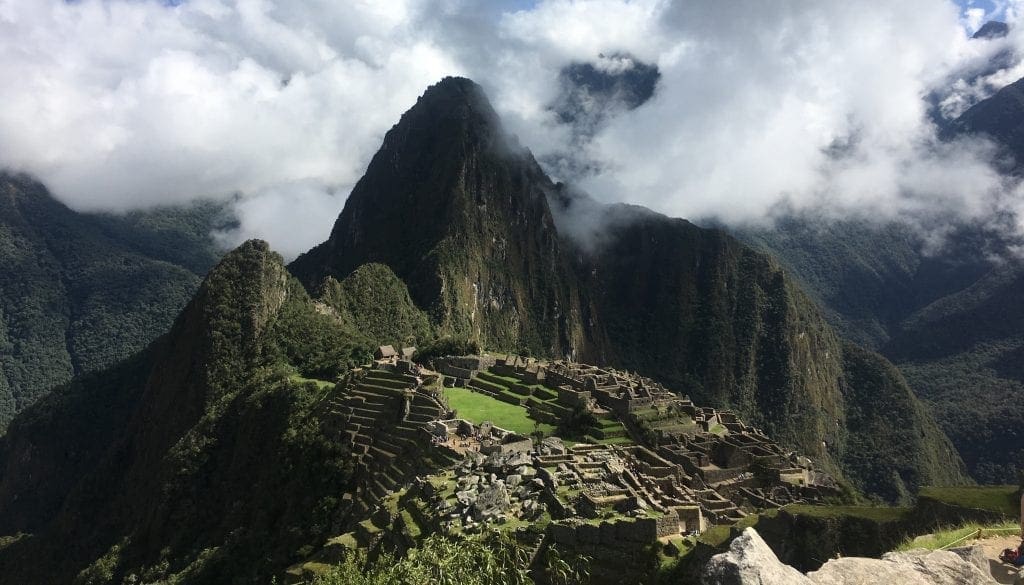
History of the Inca Trail
The Inca Trail is a hiking path in the Andean Mountains of Peru that leads to Machu Picchu. An ancient trail dating back to the 15th century, it was originally used by the Incan Empire to travel to and from Machu Picchu. The road stretches 26 miles, taking roughly four days to complete, so many travelers start midway through the trek. Reaching nearly 14,000 feet above sea level, the journey’s altitude poses challenges for even the most daring hikers.
For good reason, the South American path is famous. The destination is consistently ranked number one in the world for sights. Yet, the trail was built in treacherous terrain. The roads lead through caves carved into mountains and over wobbly, wooden bridges. And, if explorers aren’t careful, they may bump into a llama!
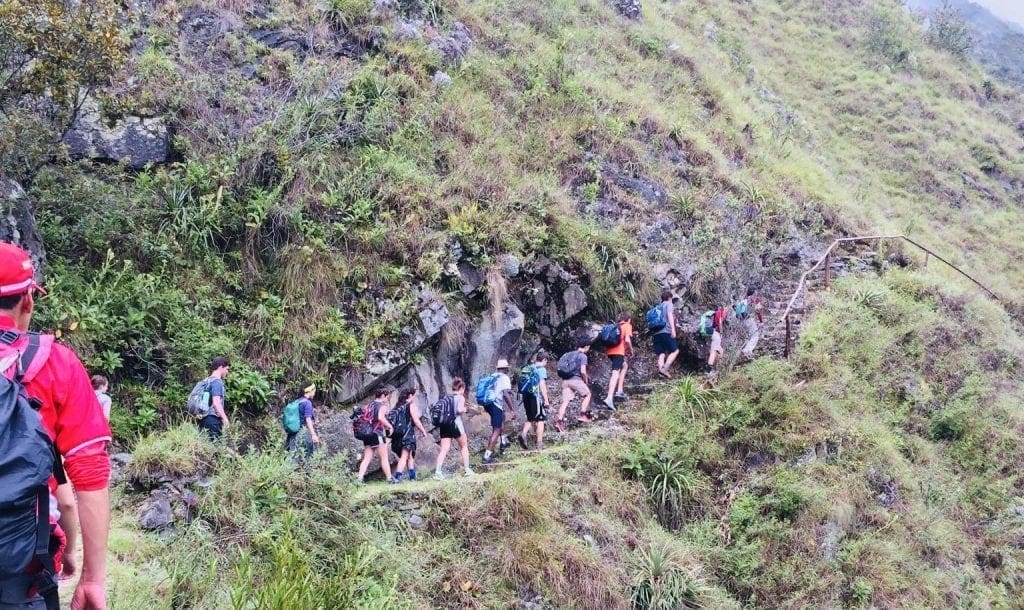
However, as most visitors may note, the challenge is well worth the reward. Over the rocky mountainside, Machu Picchu welcomes brave adventurers. Most archaeologists believe the citadel was built for the Inca emperor Pachacuti, standing as an icon to the Inca civilization. When my eyes finally landed on the ruins, I could sense its sacredness.
Preparing for the Journey
When hiking the Inca Trail, there’s many factors to consider, most importantly––the altitude. At nearly 20,000 feet above sea level, the Inca Trail sits in the clouds. For perspective, most commercial planes fly 33,000 feet in the air. Because of this altitude, travelers are at risk for experiencing altitude sickness due to a lack of oxygen. In fact, my own water bottle exploded from the pressure.
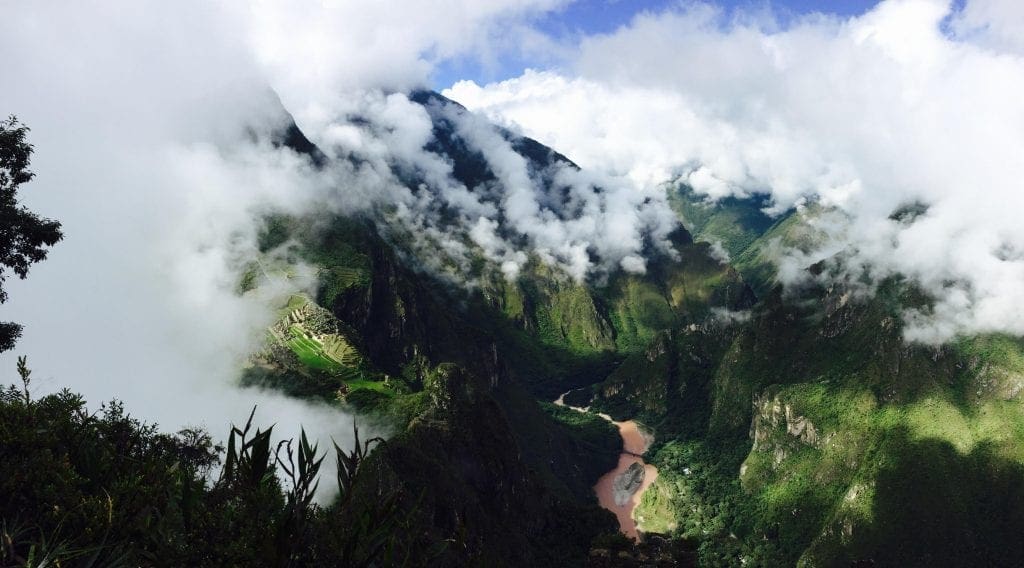
Since extremely high elevation is considered more than 18,000 feet above sea level, our group could experience shortness of breath, nausea, difficulty with coordination, and other symptoms. To combat this, we were prescribed altitude sickness medication, which acidified our blood, tricking our bodies into breathing faster.
We packed plenty of water and snacks, though the most prepared were the members with true, sturdy hiking boots. After some pep talks and distribution of supplies, the hike began.
Hiking the Inca Trail
Our part of the hike started in the rainforest at the base of the Andes Mountains. With wobbly legs, I made my way over a hanging wooden bridge and past the threshold of the Inca Trail. The wet, humid forests were incredible, brimming with waterfalls and wildlife. Marching through, I even peeked into caves fluttering with bats. The initial terrain was vibrantly green and lush, with every creature in South America coming to welcome us.
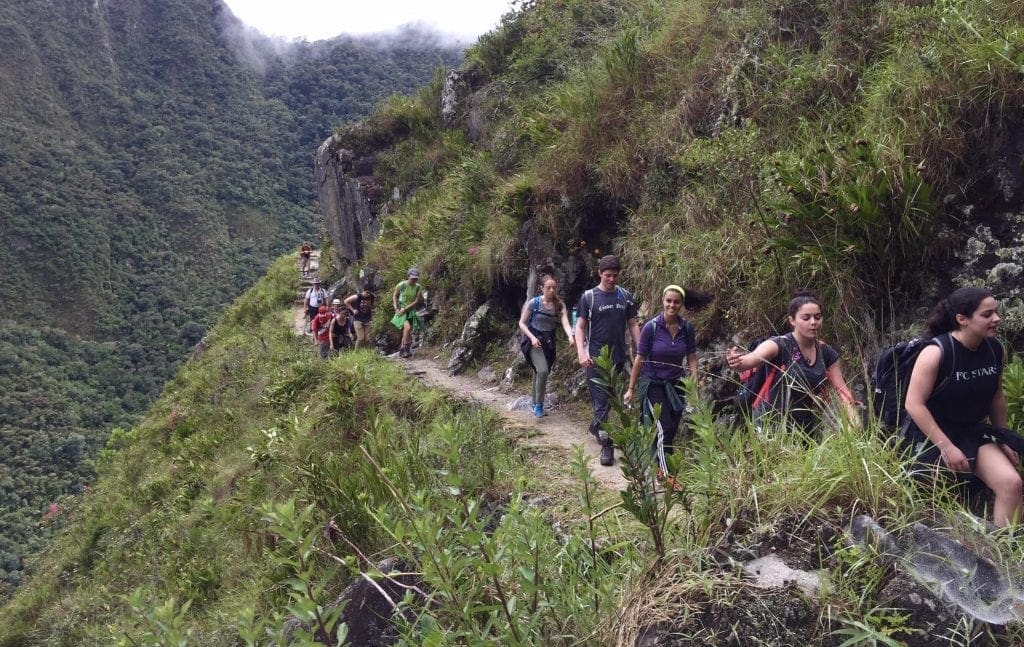
After several miles, the shady trees opened to the tall mountains of Cusco. The sun was warm against my back as I proceeded along the cliffside––the most treacherous part of the journey. Prone to landslides and falling rocks, the mountainside trail proved hazardous to many groups. However, I was simply captivated by the rich landscape around me.
The dirt paths wound around the sides of the mountains. At times, there was less than a foot between my body and the rocky edge. With nerves of steel, I pressed on, only taking breaks for water or to admire passing ritual sites.
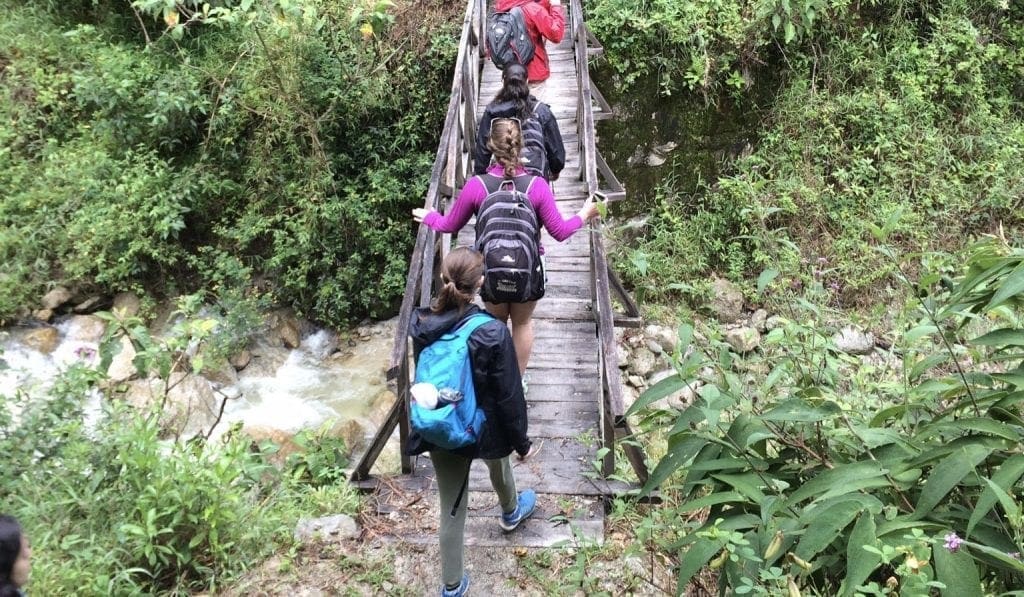
Despite the altitude medication, my body felt like iron. Our entire group was frequently short of breath because of the thin air––the biggest challenge of all. We lunged over huge, stone Inca steps and trekked under trickling waterfalls. At times, we scaled eroded steps with our hands and feet.
Finally, after seven hours, the clouds parted to reveal Machu Picchu.
The Magnificence of Machu Picchu
The ruins of Machu Picchu are unlike anything I’ve ever witnessed. Stretching into the clouds, the citadel sits on the peak of a mountain, surrounded by lush cliffs. Despite the weariness in my body, the sights of this hidden creation awoke my senses. Surprisingly, the ancient ruins of Machu Picchu had many walls and buildings intact. Finding something so large and majestic among the Andean Mountains was like a dream.

I explored the ruins, climbing up tall stone staircases to each house and courtyard. Above me, another mountain, Huayna Picchu, rose over Machu Picchu. Its ranges cradled the citadel, seeming to hide the monument from onlookers below.
This mountain, Huayna Picchu, was the next challenge suitable only for the most daring. This hike was infinitely different from the Inca Trail. Marching to its peak, our group shuffled along the cliffside, hugging the mountain as our shoes danced beside the edge. The most dangerous part of the journey, we scaled with hands and feet up the stark incline.
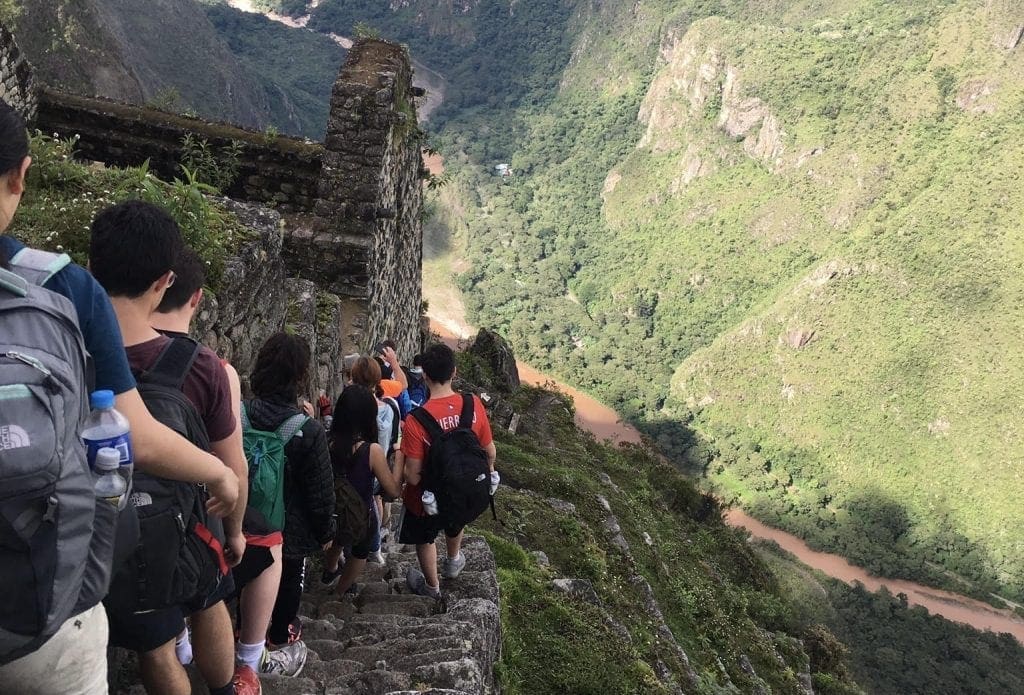
When I arrived at the peak, a new view of Machu Picchu was revealed. My body hovered in the clouds above the ruins, able to fully acknowledge its position and design from above. Though the hike was treacherous, the moment was unforgettable.
Back at the citadel’s base, I studied the designs and structure. The buildings were erected with thick stone slabs. In some areas, I found partial houses with roofs, while other places had only eroded frames. Decorated pillars and crumbling streets scattered the area, giving visitors plenty to see.
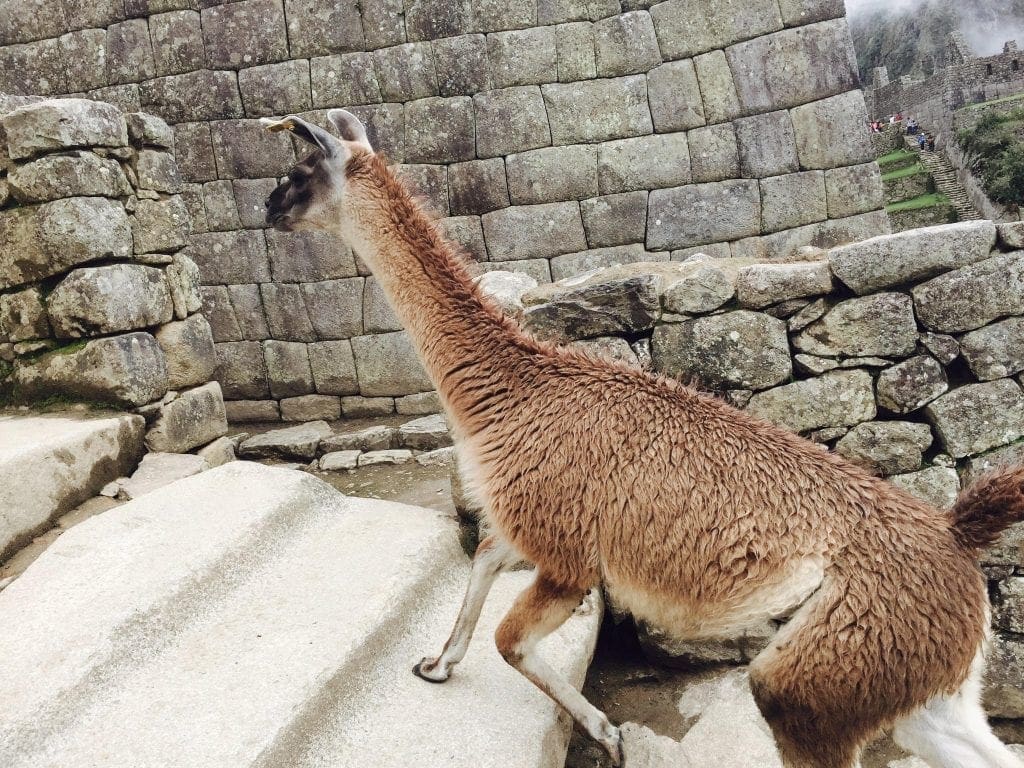
Meanwhile, wild llamas marched around me, basking in the sun as one of the few creatures to endure the heights. Ultimately, despite the challenging conditions and long hikes, exploring Machu Picchu remains one of my favorite experiences.
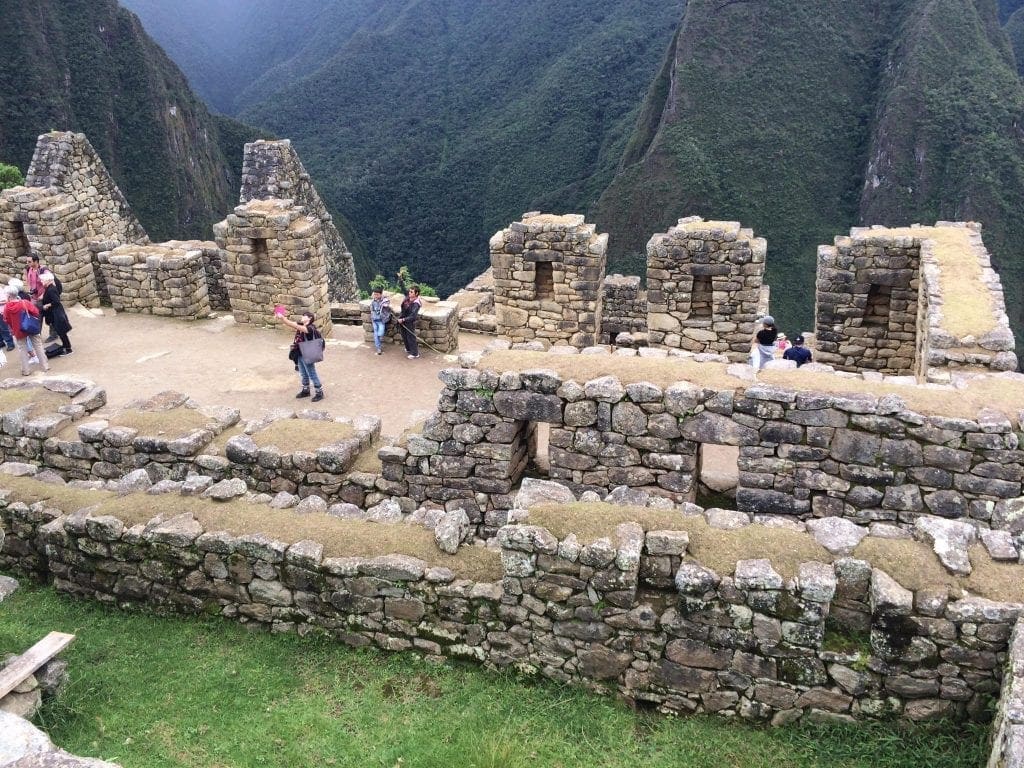
Go While You Can
Machu Picchu is one of the world’s most popular destinations. Every year, thousands of visitors like me march through its ruins. However, the constant influx of guests causes the stone to erode. Authorities have implemented new curfews and visitation regulations to protect the monument and reduce destruction. However, it will eventually be closed to the public.
If you’re hoping to visit this incredible destination, go soon. Even with new curfews or regulations, the site is worth the challenge. While I explored many areas of Peru, including the city of Lima and the rural outskirts of Cusco, my hike through the Andes resonated the most. Brimming with ancient history and magnificent scenery, Machu Picchu is unlike any other.
Feature image courtesy of Fabien Moliné
Have you traveled to Machu Picchu? Tell us in the comments!
Mary Sparago is 22-year-old creative writing and policy enthusiast who's always looking for new dogs to pet. In her spare time, Mary enjoys listening to K-pop and playing video games.
- Mary Sparagohttps://thedigestonline.com/author/msparago/
- Mary Sparagohttps://thedigestonline.com/author/msparago/
- Mary Sparagohttps://thedigestonline.com/author/msparago/
- Mary Sparagohttps://thedigestonline.com/author/msparago/


